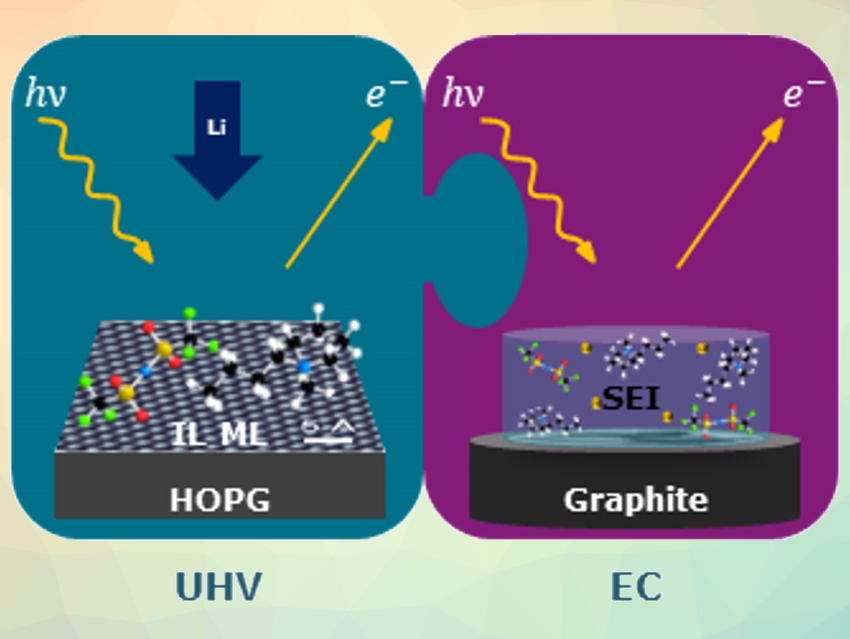In lithium-ion batteries, the solid–electrolyte interphase (SEI) that forms at the anode/electrolyte interface is crucial for the performance. However, the understanding of SEI formation could be improved. This is mainly due to the complex composition of electrodes and electrolytes in battery systems. With their low vapor pressure and wide electrochemical stability window, ionic liquid (IL)-based electrolytes could improve battery performance and safety.
Jürgen Behm, University of Ulm, Germany, and colleagues have systematically studied the interaction between graphite electrode materials and an IL electrolyte consisting of 1-butyl-1-methylpyrrolidinium bis(trifluoromethylsulfonyl)imide (or [BMP][TFSI]) and LiTFSI. The team first investigated structurally and chemically well-defined model electrodes, made from highly oriented pyrolytic graphite (HOPG). Then they went on to more realistic anode materials, such as binder-free graphite powder. The team either chemically created a passivation layer on the electrodes from the IL and lithium, or they used potential cycling to create the layer electrochemically. Then the researchers compared the composition of the layers created by these processes using ex situ X-ray photoelectron spectroscopy (XPS) and electrochemical methods.
The team found clear differences between chemical and electrochemical SEI formation, and also between SEI formation on the different electrode materials. The results provide detailed insights into the influence of the applied potential and defect sites on IL decomposition and SEI formation on these materials.
- Surface Science and Electrochemical Model Studies on the Interaction of Graphite and Li-containing Ionic Liquid,
Isabella Weber, Jihyun Kim, Florian Buchner, Johannes Schnaidt, R. Juergen Behm,
ChemSusChem 2020.
https://doi.org/10.1002/cssc.202000495



